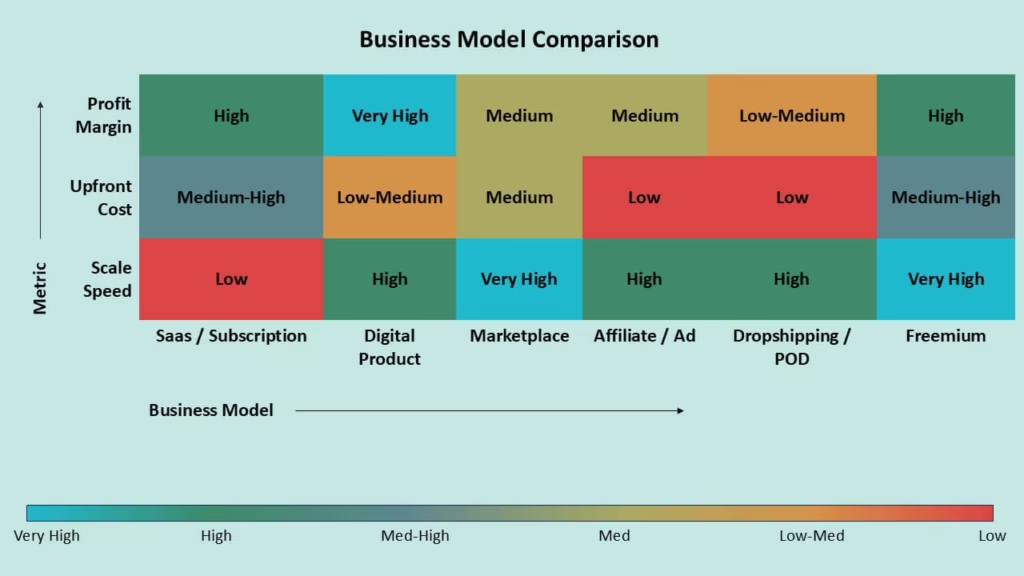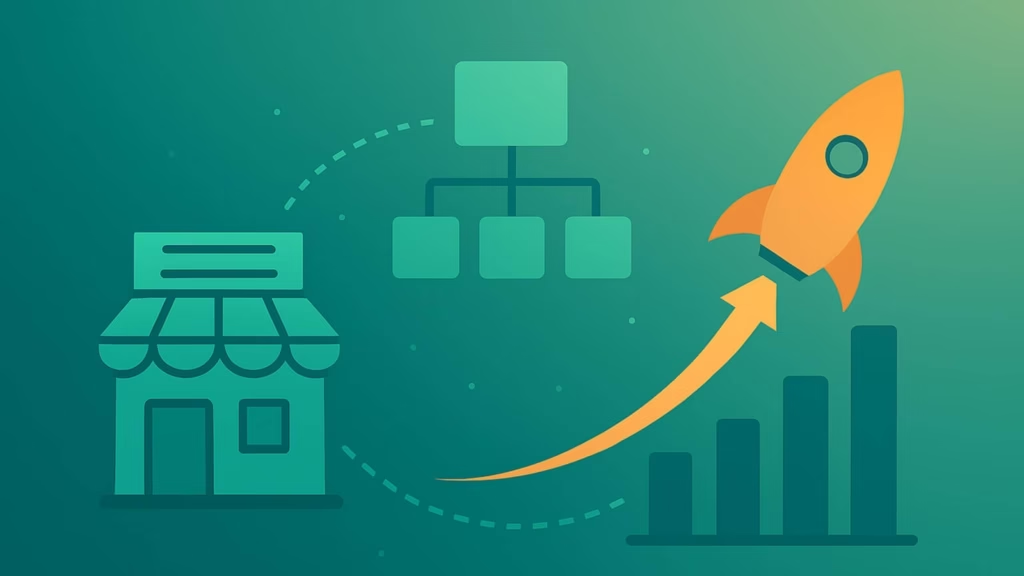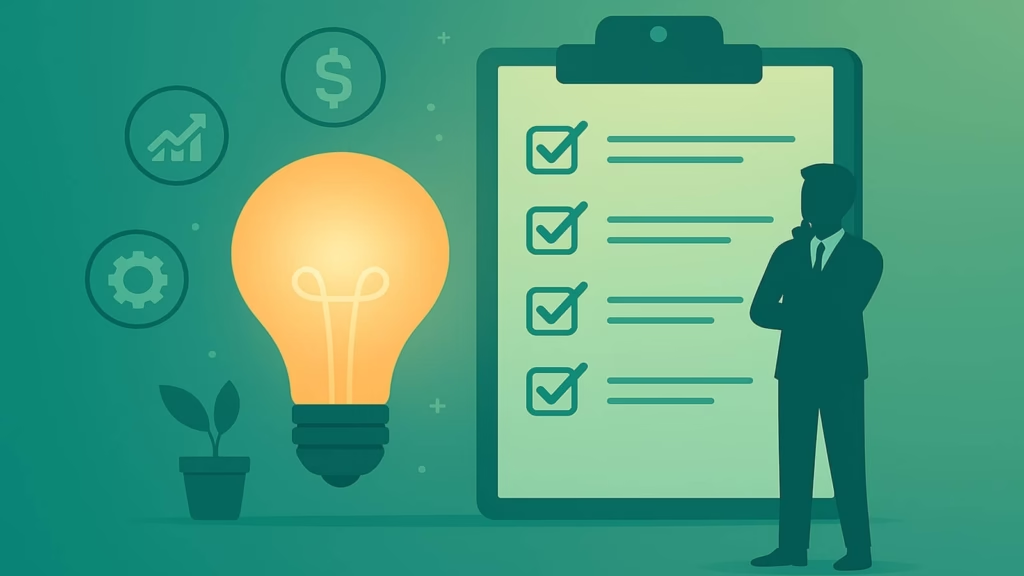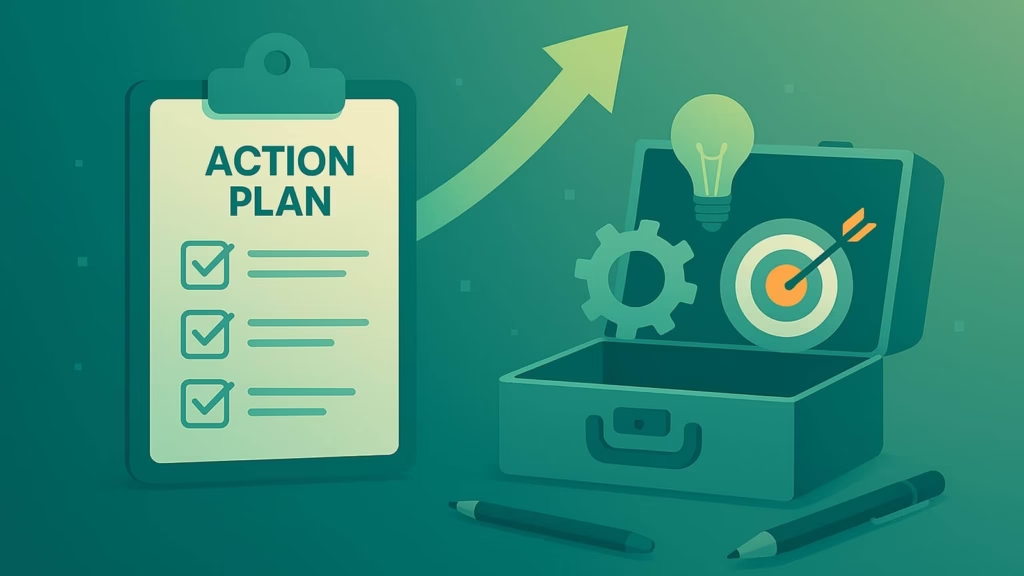The pursuit of exponential business growth has never been more achievable—or more critical. In 2025’s hypercompetitive landscape, choosing the right business model early can mean the difference between scaling from startup to unicorn or watching competitors surge ahead with superior scalability foundations. Scaling potential isn’t just about growth; it’s about growing faster than your cost base, creating exponential returns that compound over time.
The data is clear: subscription economy businesses have grown 435% over the last decade, dramatically outpacing traditional business models. Meanwhile, the global AI-as-a-Service market is projected to reach $105 billion by 2030 with a 36% CAGR, and digital subscription revenues continue surging with 16.2% average annual growth in SaaS. For aspiring entrepreneurs and early-stage business owners, understanding which scaling potential business models offer the fastest growth—and why—is essential for making informed strategic decisions that set the stage for sustained, profitable growth.

Business Model Scalability Comparison: Speed, Costs, and Risks Analysis for 2025
What Makes a Business Model Scalable?

True scalability exists when a business can handle exponential growth in demand without proportional increases in costs or complexity. It’s the holy grail of business models: serve more customers while your cost structure remains relatively fixed. This fundamental concept separates businesses that merely grow from those that scale—a distinction that determines long-term success and market dominance.
The core drivers of scalability center around five critical elements. Automation and digitization eliminate manual bottlenecks, allowing systems to handle increased volume without additional human resources. Recurring revenue models provide predictable income streams that compound over time, with 70% of subscription revenue typically coming from existing customers. Platform effects and network growth create self-reinforcing value loops where each new user increases the platform’s value for all users. Standardization and systematic processes ensure quality and efficiency remain consistent as operations expand. Finally, technology leverage enables global reach and low marginal costs for additional customers.
A scalable business model passes a simple test: adding the next 1,000 customers should cost significantly less than the first 1,000. When Dropbox achieved over 200 million users with only 1.6-4% converting to paid plans, the model still generated substantial revenue because the infrastructure could support massive free usage at minimal incremental cost. This exemplifies how truly scalable models turn network effects and viral growth into competitive moats.
Understanding these fundamentals helps entrepreneurs evaluate opportunities through the scalability lens rather than traditional growth metrics. The question shifts from “How fast can we grow?” to “How efficiently can we scale without breaking our unit economics?”
The Fastest-Scaling Potential Business Models in 2025

1. SaaS (Software as a Service) and Digital Subscription Platforms
SaaS remains the undisputed king of scalable business models, with digital delivery, recurring revenue, and near-zero cost per additional customer creating an almost perfect scaling environment. The numbers speak volumes: SaaS companies in the Subscription Economy Index show 16.2% average annual revenue growth, making it the fastest-growing sector. Modern SaaS benefits from cloud infrastructure that automatically scales, subscription revenue that compounds monthly, and global distribution without physical logistics.
2025 trends are pushing SaaS scalability even higher. AI-as-a-Service represents a massive opportunity, with the global market projected to grow from $16.08 billion in 2024 to $105.04 billion by 2030—a staggering 36.1% CAGR. Micro-SaaS solutions targeting niche markets allow solo entrepreneurs to build profitable businesses with minimal overhead. Companies like Canva, Freshbooks, and industry-specific tools demonstrate how focused SaaS offerings can capture substantial market share through superior user experience and targeted functionality.
The recurring revenue model creates unprecedented predictability. Unlike one-time sales, SaaS companies can forecast revenue months in advance, enabling strategic investments in growth and development. Customer lifetime value in SaaS often exceeds 3-5x the acquisition cost, providing substantial margins for marketing and expansion.
2. Digital Products & Online Courses
Digital products represent perhaps the most capital-efficient scaling model available to entrepreneurs. With zero inventory, unlimited sales potential, and one-time creation costs, digital products can be sold globally without manufacturing or shipping constraints. The e-learning market alone is projected to reach $375 billion by 2026, reflecting massive demand for digital education and training.
New trends in 2025 are expanding opportunities. AI-powered content creation tools enable faster course development, while interactive formats like live cohorts and community-based learning increase engagement and pricing power. Template marketplaces, digital planners, and specialized software tools demonstrate how creative entrepreneurs can package expertise into scalable products.
Success stories abound: Udemy instructors generate substantial recurring income from courses created years ago, while eBook creators on platforms like Amazon Kindle continue earning royalties long after publication. The key advantage lies in the one-to-many delivery model—create once, sell infinitely—combined with premium pricing for specialized knowledge.
3. Marketplace & Platform Models
Two-sided marketplaces and platform businesses leverage network effects to create exponential scaling potential. As more users join one side (buyers), the platform becomes more valuable for the other side (sellers), creating a self-reinforcing growth cycle. This dynamic has enabled companies like Amazon, Uber, and Airbnb to achieve dominant market positions.
Platform models set to grow in 2025-2026 include peer-to-peer asset sharing marketplaces, remote talent platforms, and local sourcing B2B networks. The key insight: network effects mean that growth accelerates rather than maintains linear progression. Each new participant increases the platform’s value for all existing participants, creating powerful competitive moats.
However, reaching critical mass remains the primary challenge. Platforms must solve the “chicken-and-egg problem” of attracting both sides simultaneously. Once critical mass is achieved, growth can become exponential. The global marketplace business model is projected to reach $7.39 trillion by 2025 with approximately 10% annual growth.
4. Affiliate/Ad-Based and Content Businesses
Content businesses offer high scalability through global distribution and automated monetization. Once created, content can generate revenue indefinitely through advertising, affiliate commissions, and sponsorships. The content monetization market continues expanding as creators discover new revenue streams beyond traditional advertising.
2025 presents both opportunities and challenges. While AI tools enable faster content creation, competition has intensified across all platforms. Successful content businesses focus on niche expertise, community building, and diversified monetization strategies. YouTube creators, blog publishers, and review sites demonstrate how content can scale globally with relatively low ongoing costs.
The key to success lies in building engaged audiences rather than just large audiences. Creators with 10,000 highly engaged followers often out-earn those with 100,000 passive subscribers. Revenue streams include display advertising, affiliate marketing, sponsorships, and premium content subscriptions.
5. E-commerce (Dropshipping & Print-on-Demand)
Dropshipping and print-on-demand models eliminate inventory risk while enabling rapid scaling. These businesses can launch with minimal capital and scale quickly through digital marketing and platform leverage. Print-on-demand particularly benefits from on-demand production, eliminating storage costs and enabling unlimited product variations.
Platform integration with Shopify, Amazon, and specialized print services allows entrepreneurs to reach global markets immediately. The key advantage: adding new products or entering new markets requires no additional inventory investment. Successful businesses focus on unique designs, targeted niches, and superior customer experience.
However, lower profit margins require higher volume for substantial returns. Net margins typically range from 10-25%, compared to 60-80% for digital products. Success depends on efficient marketing, strong brand positioning, and operational excellence in customer service and quality control.
6. Freemium-to-Premium SaaS & Apps
Freemium models leverage massive free user bases to drive premium conversions, creating scalable acquisition engines with minimal marketing costs. Despite typically low conversion rates (1.6-4%), the model works because free users cost almost nothing to serve while providing valuable data and network effects.
2025 innovations include AI-driven upgrade prompts, gamification elements, and micro-payment options. Successful freemium businesses carefully balance free value with premium incentives. Dropbox‘s success with over 200 million users demonstrates how freemium can achieve massive scale even with low conversion rates.
The key to freemium success: design the free tier to provide genuine value while creating natural upgrade paths as users’ needs grow. Timing upgrade prompts around moments of need or friction dramatically improves conversion rates.
Key Factors for Entrepreneurs to Consider

Choosing the right scalable business model requires honest assessment of your skills, resources, and market position. Skillset alignment is crucial: SaaS requires technical expertise, content businesses demand creative and marketing skills, while dropshipping focuses on product sourcing and customer service. Mismatched skills lead to operational struggles that prevent effective scaling.
Capital requirements vary dramatically. Content creation and print-on-demand can start with under $1,000, while robust SaaS platforms may require $10,000-50,000 for development and initial marketing. Understanding true startup costs prevents underfunding that kills promising ventures before they achieve traction.
Competition and market saturation intensify in fast-scaling industries. Differentiation through niche targeting, superior user experience, or unique value propositions becomes essential for breaking through crowded markets. Generic approaches rarely succeed in highly scalable industries where winners often take the majority of market share.
Customer retention directly impacts scaling sustainability. Subscription and SaaS businesses with monthly churn above 5-7% struggle to achieve profitable growth, as acquisition costs exceed customer lifetime value. Automated onboarding, community building, and continuous value delivery are essential for maintaining healthy retention rates during rapid scaling.
Platform dependency creates both opportunities and risks. Businesses relying heavily on YouTube, Amazon, or social media platforms benefit from established infrastructure but risk algorithm changes or policy shifts. Successful entrepreneurs build owned channels (email lists, direct customers) alongside platform-dependent strategies.
Real-World Examples & 2025 Trends

AI-powered micro-SaaS businesses represent the fastest-growing segment in 2025. Solo entrepreneurs use AI tools to create niche software solutions serving specific industries or use cases. Examples include AI writing assistants for lawyers, automated bookkeeping for freelancers, and predictive analytics for small retailers. These businesses often achieve $10,000-50,000 monthly recurring revenue with minimal team overhead.
Hybrid community-commerce models combine membership, digital products, and services for diversified recurring revenue. Successful examples include fitness creators offering workout apps, nutrition courses, and community access; business coaches providing templates, group coaching, and done-for-you services. This approach creates multiple revenue streams while deepening customer relationships.
Global micro-niches enabled by digital distribution allow entrepreneurs to serve specialized markets worldwide. A pottery instructor can sell courses globally, a Excel expert can offer templates internationally, and a productivity coach can serve clients across time zones. Digital distribution eliminates geographic limitations that previously prevented niche specialization.
Action Plan

Step 1: Assess Your Foundation. Evaluate your skills, available capital, and risk tolerance using the scalability checklist. Identify which models align with your strengths and resources. Be honest about gaps that might prevent successful execution.
Step 2: Choose Your Primary Model. Select one business model for initial focus rather than attempting multiple approaches simultaneously. Master one scalable system before diversifying. Study successful examples in your chosen model to understand best practices and common pitfalls.
Step 3: Validate Demand. Test market demand before significant investment. For SaaS, create landing pages and gauge signup interest. For digital products, pre-sell courses or templates. For marketplaces, survey potential users on both sides. Validation prevents building solutions nobody wants.
Step 4: Build for Scale from Day One. Design systems, processes, and infrastructure to handle 10x your initial capacity. Choose scalable technology platforms, create standard operating procedures, and implement metrics tracking. Early architectural decisions determine long-term scaling potential.
Step 5: Focus on Key Metrics. Track customer acquisition cost (CAC), lifetime value (LTV), churn rate, and unit economics. Maintain CAC:LTV ratios of at least 1:3 for sustainable growth. Monitor leading indicators that predict future performance rather than just trailing revenue numbers.
Step 6: Automate Ruthlessly. Identify and automate repetitive tasks as quickly as possible. Marketing automation, customer onboarding, billing, and customer service should be systematized before manual processes become bottlenecks. Automation enables scaling without proportional staff increases.
FAQs
Which business model is easiest to scale solo in 2025?
Digital products and content businesses offer the lowest barrier to solo scaling. AI tools now enable single entrepreneurs to create courses, eBooks, templates, and content at unprecedented speed. However, “easiest” depends on your existing skills—a developer might find micro-SaaS easier than content creation.
Do subscription models work outside software?
Absolutely. Subscription models thrive across industries: meal kits, fitness programs, consulting services, mastermind groups, and even physical products. The key is providing ongoing value that justifies recurring payments. Netflix proved subscriptions work for entertainment; now every industry is exploring subscription variants.
What are the “hidden costs” of scaling fast?
Fast scaling often reveals operational weaknesses: customer service bottlenecks, quality control issues, cash flow problems from growth capital needs, and team management challenges. Plan for 2-3x your estimated costs and timeline. Many businesses break under the pressure of success they weren’t prepared to handle.
How do I balance growth with sustainability?
Focus on unit economics before vanity metrics. Ensure each customer generates more value than acquisition costs. Build cash reserves for growth investments. Sustainable scaling means saying no to unprofitable growth opportunities while investing in systems that support long-term expansion.
Conclusion & Call to Action
Scalability isn’t about hustle—it’s about systems. The fastest-growing business models share common characteristics: digital delivery, recurring revenue, automation, and network effects. Whether you choose SaaS, digital products, marketplaces, or content businesses, success depends on building scalable systems from day one rather than trying to retrofit scaling capabilities later.
The opportunity has never been greater. AI tools reduce creation costs, global internet access expands markets, and platform infrastructure enables rapid deployment. But moving fast requires moving smart. Choose the business model that aligns with your skills and market timing, validate demand thoroughly, and build systems designed for exponential growth.
Your next step: Select your top scaling model and map your first three automation opportunities. The entrepreneurs who scale fastest in 2025 will be those who start building scalable systems today. The question isn’t whether to scale—it’s how efficiently you’ll do it.
This article forms part of our series, “How to Choose the Right Business Model for You.” For further guidance on selecting a business model that fits your strengths and aspirations, be sure to explore the full series for actionable insights and expert advice.
